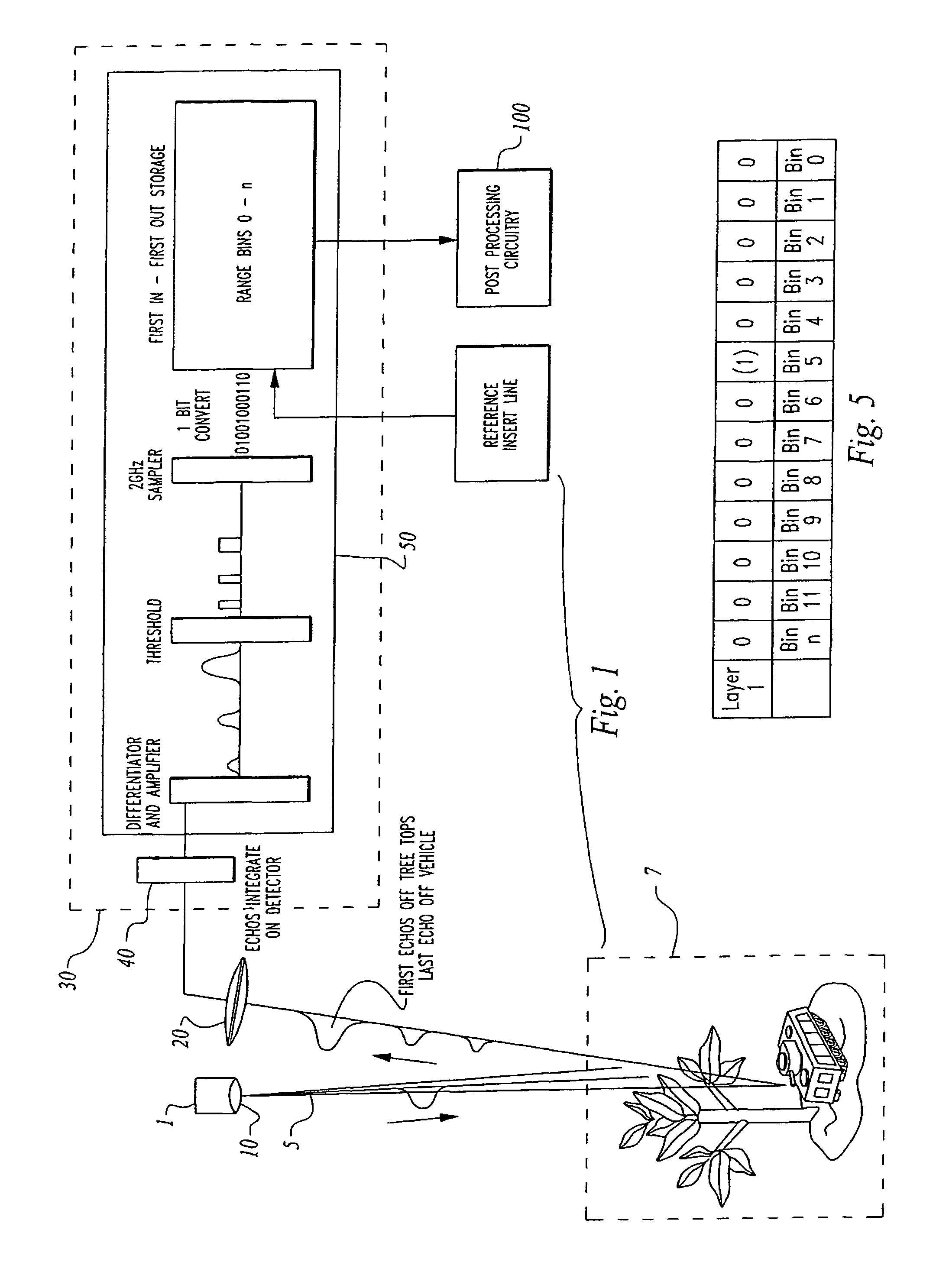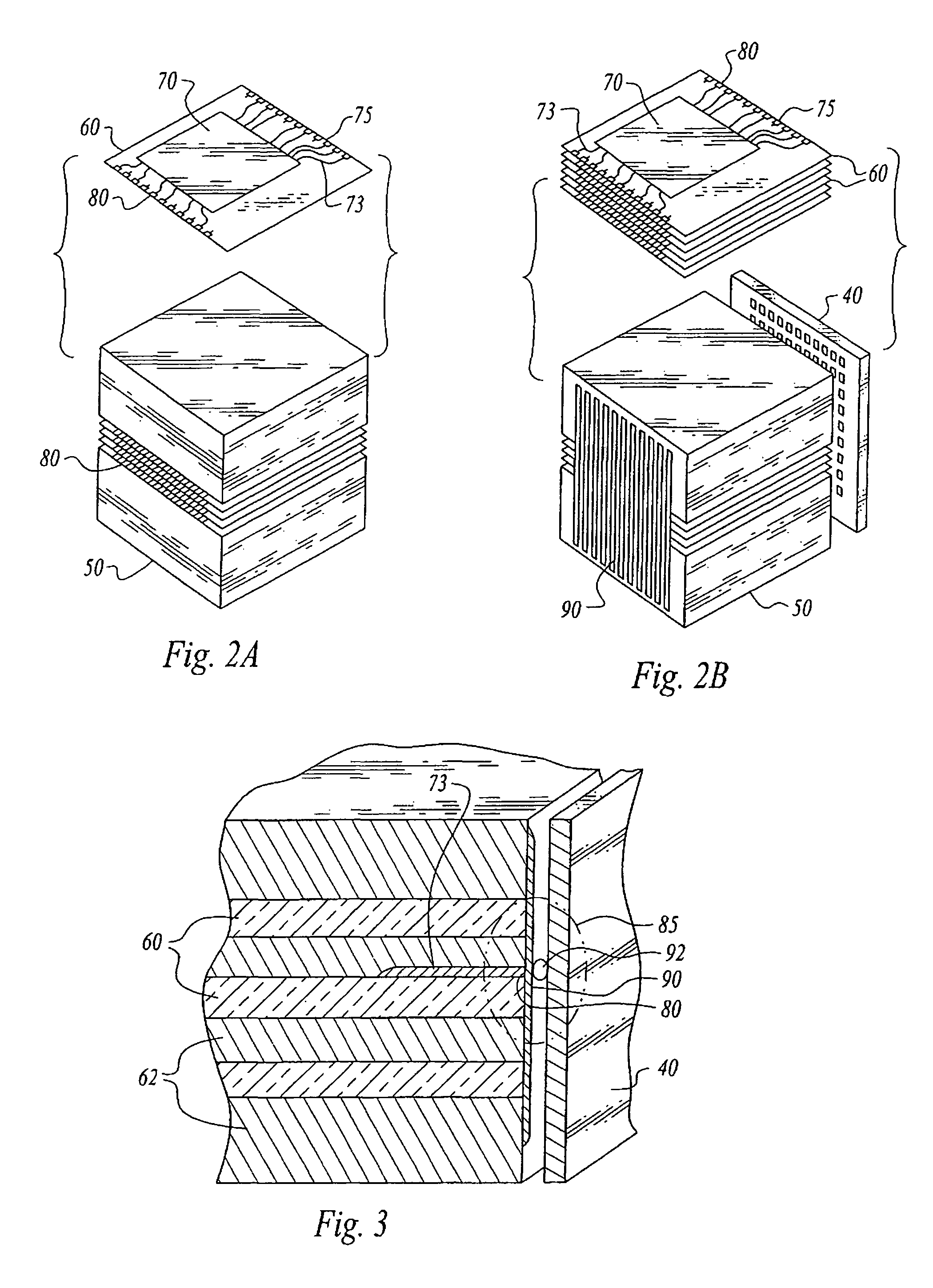Three-dimensional LADAR module with alignment reference insert circuitry comprising high density interconnect structure
a high density, interconnecting structure technology, applied in the direction of reradiation, distance measurement, instruments, etc., can solve the problems of undesirable sensor types, lack of circuit speed and capacity to achieve very high resolution and sensitivity of centimeter range, etc., to achieve enhanced imaging capability, reduce layer-to-layer or channel-to-channel jitter, and increase detector output processing circuit density
- Summary
- Abstract
- Description
- Claims
- Application Information
AI Technical Summary
Benefits of technology
Problems solved by technology
Method used
Image
Examples
Embodiment Construction
[0040]Turning now to the figures wherein like numerals designate like elements among the several views, FIG. 1 shows a block diagram of a preferred embodiment of the present invention.
[0041]A photon source, such as a laser 1, generates a beam pulse 5, which is directed toward a scene or target 7, through suitable beam-shaping optics 10.
[0042]A 3-D LADAR imaging system incorporating stacked microelectronic layers is provided. A light source such as a laser is imaged upon a target through beam shaping optics. Photons reflected from the target are collected and imaged upon a detector array through collection optics. The detector array signals are fed into a multilayer processing module Wherein each layer includes detector signal processing circuitry. The detector array signals are amplified, compared to a user-defined threshold, digitized and fed into a high speed FIFO shift register range bin. Dependant on the value of the digit contained in the bins in the register, and the digit's b...
PUM
 Login to View More
Login to View More Abstract
Description
Claims
Application Information
 Login to View More
Login to View More - R&D
- Intellectual Property
- Life Sciences
- Materials
- Tech Scout
- Unparalleled Data Quality
- Higher Quality Content
- 60% Fewer Hallucinations
Browse by: Latest US Patents, China's latest patents, Technical Efficacy Thesaurus, Application Domain, Technology Topic, Popular Technical Reports.
© 2025 PatSnap. All rights reserved.Legal|Privacy policy|Modern Slavery Act Transparency Statement|Sitemap|About US| Contact US: help@patsnap.com



